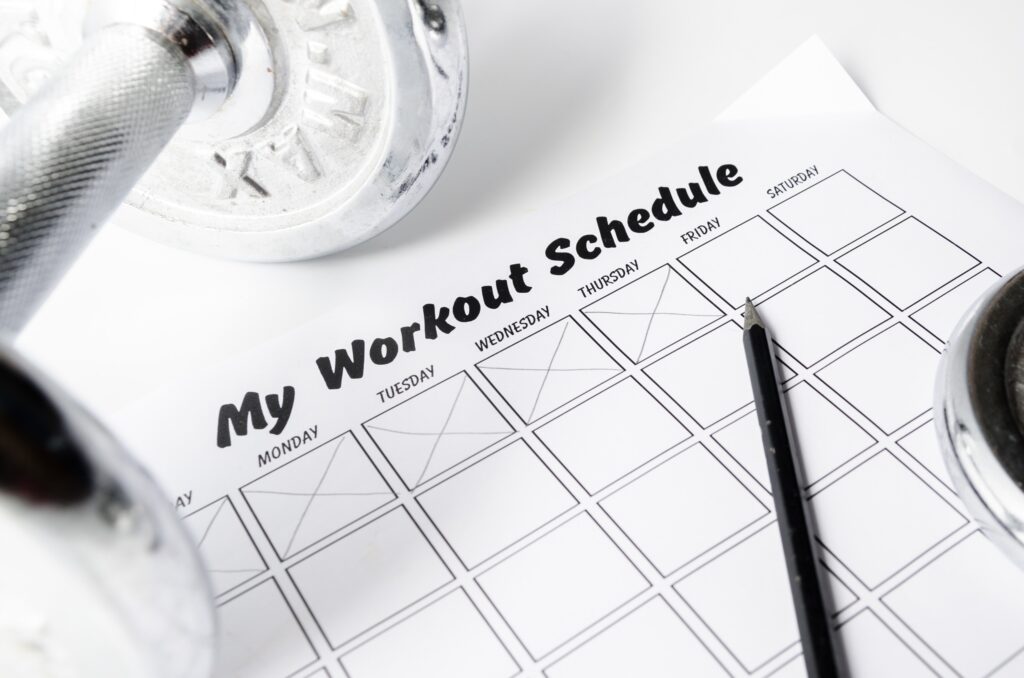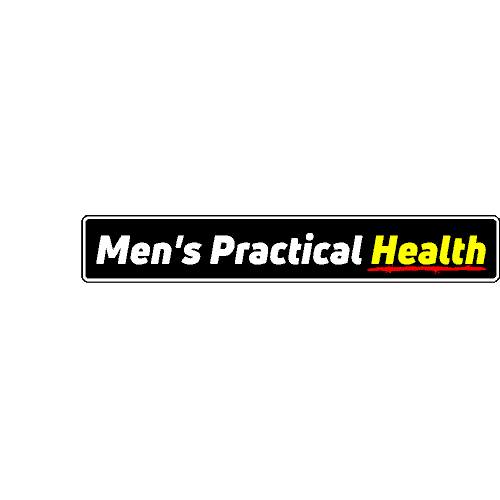Thinking of getting back into shape? Here is a guide for returning to the gym.
Embarking on the journey back to the gym after a substantial break can be exciting and challenging, especially for men who have experienced changes in their physical condition.
If you’ve put on some weight and feel a bit out of shape, fear not …
You can gradually rebuild your strength and fitness with the right mindset and approach.
In 2023, I returned to the gym after a few years away, and it has completely transformed my physique and mental health for the better.
So, I wanted to share my main tips for anyone wanting to get back into a gym routine so that you can achieve great results.
What You Need To Consider When Returning To The Gym After A Long Break
- Set realistic expectations
- Establish a Realistic Fitness Routine
- Track Your Progress & Gradually Increase Intensity
- Allow for Proper Rest and Recovery
- Plan your exercise routine
- Stay Consistent and Patient
Set Realistic Expectations

Understanding that your body has changed since you last hit the gym is essential. You may have lost some muscle mass or gained some fat.
But that’s okay …
You can set realistic and achievable fitness goals if you acknowledge your current fitness level.
So, you won’t be able to train the way you did before your long break. This is why setting realistic goals will keep you motivated for the long road ahead.
Remember – Rome was not built in a day …
And neither will your physique.
So, what type of expectations or goals am I talking about?
You should consider how often you can train.
Going straight into David Goggins’ mode and training every day is unnecessary.
Simply training two times a week …
Training your whole body is a great place to start.
This gives your body plenty of time to rest and recover between workouts and is enough to work the major muscles throughout the week to make some gains.
How much weight should I lift after a break from the gym?

Understanding how much weight you should lift after returning to the gym is essential.
Remember, you will not be as strong as you were the last time you trained.
Do not try to lift too much too soon, or you will probably suffer from delayed-onset muscle soreness (DOMS).
Choose a weight that you can do 12-20 repetitions. The more repetitions you can do, the more practice you will get with performing good technique.
Establish a Realistic Fitness Routine

First, you should ask yourself honestly …
How many days of the week can you dedicate to returning to the gym?
Setting this target is a massive aspect of returning to the gym long-term.
If you expect to work out 3-4 days a week and only train once a week (because, let’s face it, life gets in the way) …
Then, you will quickly get demoralised for not achieving your target …
And as a result, you may lose the motivation to go and start to think it’s not worth it.
So, be honest with yourself and ensure you can train for the number of days you decide. This will help you in the long term.
You should also decide how long you can train during each session. This will help you later when planning your exercise routine.
Track Your Progress & Gradually Increase Intensity

One of the most important aspects of weight training is to record your workouts, noting strength, endurance, and overall fitness improvements.
This way, you can see your improvements. You can also celebrate small victories and use them as motivation to stay consistent.
Gradually increase the intensity of your exercises to allow your body to adapt to the new physical requirements.
Lifting too heavy too soon will lead to poor technique and increase the risk of injuries.
Plan Your Exercise Routine

Planning your gym workout is essential for anyone who participates in resistance training. If you’re returning to the gym after a long absence, it is recommended to keep things simple.
Above all, you must re-learn lifting techniques to reduce injury risk and train efficiently.
Luckily, this process should take little time due to muscle memory from previously lifting weights.
Also, starting with basic exercises and not complicating things will be the most effective way of quickly rebuilding muscle.
These basic exercises include:
- Squats
- Deadlift
- Lunges
- Barbell Row
- Lat Pulldown
- Bench press
- Chest fly
Use these exercises as the basis for your workout programme, whether you follow a full-body workout or split workout routine.
Create a structured workout routine targeting different muscle groups to ensure balanced development and reduce the risk of overtraining.
Allow for Proper Rest and Recovery

Giving yourself time to rest and recover is hugely important when you return to intense physical activity.
Muscles need time to repair and grow, so schedule rest days between workouts so your body has enough recovery time.
I mentioned “when possible” because, for many people, you might train with a split workout. This means you will train on consecutive days throughout the week.
While there are benefits to split workouts for more advanced gym goers, it can be difficult to recover fully.
Split workouts not only mean there can be overlaps with some muscles being worked on consecutive days, but the nervous system does not get as much time to rest and recover.
Therefore, pay attention to how your body responds to exercise. Adjust your routine and seek professional advice if you experience pain beyond typical muscle soreness.
In addition, you must prioritise quality sleep and eat the required amount of protein to support your body’s recovery.
Stay Consistent and Patient

Consistency is critical to success in anything. If you don’t train regularly, you will become disheartened by the lack of progress you will make.
So, stay focused on your fitness journey, and be patient with the process.
Results take time, and every effort counts.
Summary
Returning to training at the gym after a long time away requires a measured and patient approach to prevent overtraining and injury.
Begin with lower-intensity exercises to regain strength and flexibility, then progressively increase difficulty. Opt for full-body workouts to ensure balanced development, incorporating rest days to allow muscles the necessary time to repair and grow.
Prioritising proper nutrition and sleep will further aid recovery. Above all, staying consistent and patient is vital, as restoring previous fitness levels is a journey that rewards perseverance over time.
Welcome back to the gym – you’ve got this!


